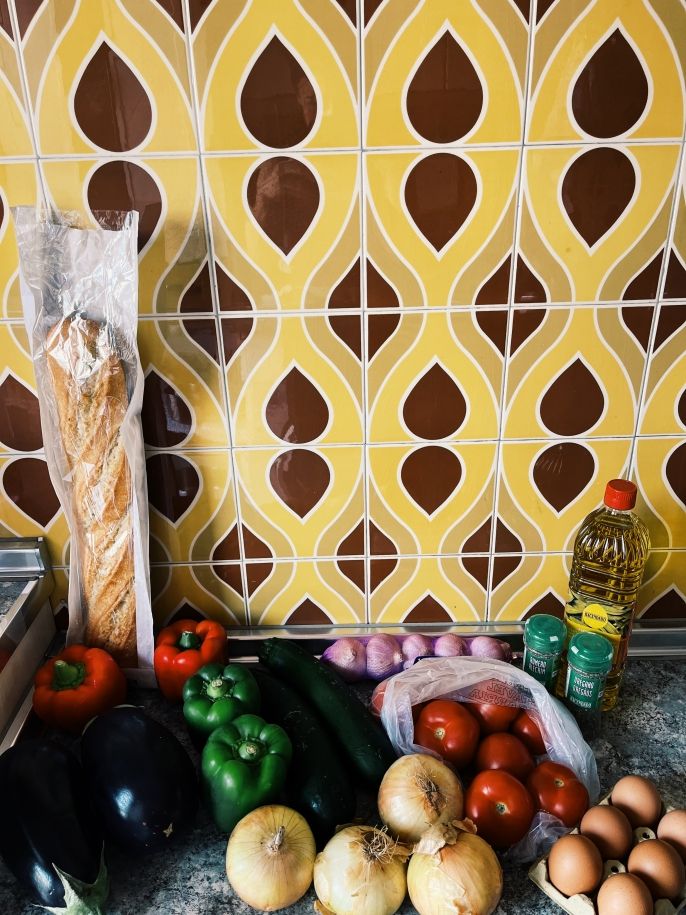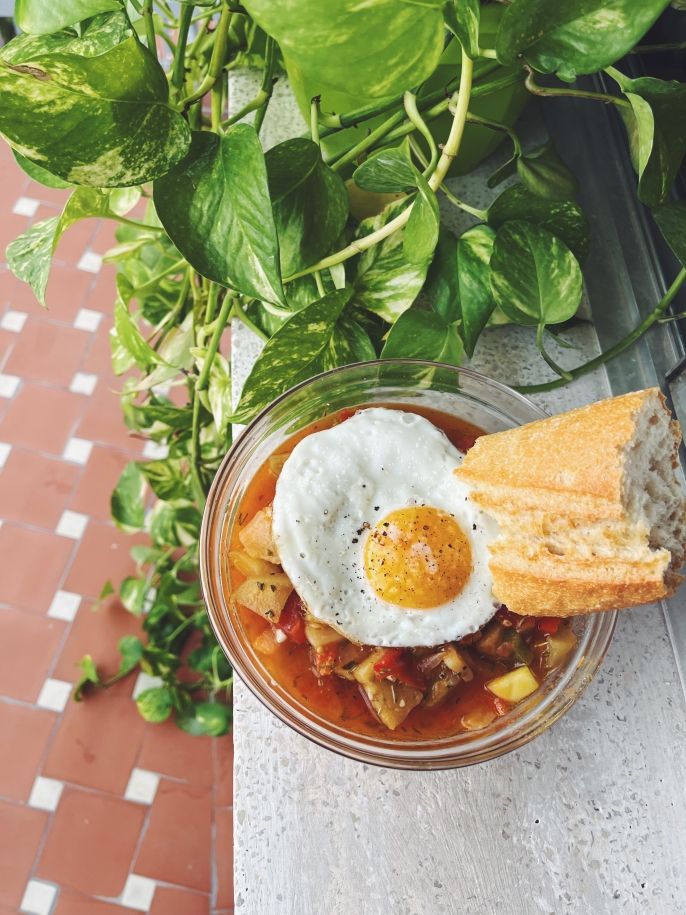How to Make Traditional Spanish Pisto
I am a firm believer that one of the best ways to get to know a culture is to get to know its gastronomy. It often reflects a society’s history, beliefs, and way of life. Pisto is no exception. It is likely that pisto comes from Spain’s Moorish influence, as many with many of Spain’s traditional dishes. The preparation of pisto reflects the Spanish lifestyle: slow-paced and family-oriented. I tried this recipe multiple times upon arriving in Spain, and I can say that it definitely made me feel more connected to the culture and lifestyle.
Servings: 5-8
Ingredients:
- 3 small zucchini diced
- 2 medium red bell peppers diced
- 2 medium green bell peppers diced
- 4 medium onions diced
- 3 small purple eggplants peeled and diced
- 2 pounds of ripe tomatoes peeled and diced - the better your tomatoes, the better your pisto!
- 5 cloves of garlic diced
- A pinch of thyme rosemary and (optionally) fresh oregano
- 1 teaspoon of cumin
- 1 teaspoon sugar (or honey)
- Salt and pepper to taste
- Extra virgin olive oil
- Fried eggs (optional)
- Manchego sheep’s cheese (optional)
- Bread (optional)
Note: It’s recommended to sauté each vegetable separately, which is not required, but will ultimately result in the best flavor.
Steps:
Peel and dice the vegetables as mentioned above.
- Place the eggplant on paper towels in layers and sprinkle with kosher salt. Let them sit at least 10 minutes.
- Place two frying pans over medium heat and add a splash of olive oil to each pan.
- Add the diced onions to one pan, with a pinch of salt. Sauté over a medium-low heat until they start to turn transparent, then cover the pan and allow them to poach (you don't want them to brown). Once transparent, set aside in a large bowl.
- In the meantime, add the peppers to the other pan and sauté over a medium high heat until starting to brown. Lower to medium and cover for about 10 minutes. Once cooked through reserve along with the onions.
- Rinse the salt off of the eggplant in a mesh strainer.
- Follow the same steps as the peppers to cook the zucchini and eggplant (in separate pans). You want to start cooking them on medium high, and once starting to brown lower the heat and cover until tender, stirring occasionally so that they do not stick to the pan. Then set aside along with the other vegetables in the same large bowl.
- Add all of the spices to the bowl of vegetables and mix well.
- Next, in a large frying pan that will safely hold all of your ingredients, and add a splash of olive oil and the diced garlic. Sauté over medium heat until starting to fry. Then add the peeled and diced tomato to the pan. Cook over a medium low heat for about 20 minutes, stirring frequently, until you have tomato sauce. Add the sugar, and adjust for salt.
- Mix the previously cooked vegetables with the tomato sauce.
- Mix everything well, and cook for 10 minutes over a medium heat. Adjust for salt and spices to your preference.
- This last step is optional, but I love add manchego cheese and a fried egg to finish. To do this, tear up the manchego into small pieces and add the desired amount into the pot and let simmer until the cheese begins to melt. In a separate pan, fry an egg to your preference. Place the egg on top of the pisto, serve with bread, and enjoy!
While this recipe can be quite tedious to make, I really enjoyed feeling like I was learning about Spanish culture through cooking. The Spanish way of life is slow and thoughtful, as is the preparation of this dish.
Until next time,
Chloe
Related Posts

Who Runs the World? Pharaohs.
Running the Pyramids Half Marathon in Cairo, Egypt Egypt and a half marathon? Let’s run it back—literally. I had the opportunity to travel to Cairo, Egypt, to run the annual... keep reading

Copenhagen Cosplays the North Pole
A Winter Weekend Guide If you’re searching for the perfect winter weekend getaway while studying abroad, Copenhagen deserves a spot at the top of your list. While the city is... keep reading

Let’s Moroccan Roll
A 4-Day Morocco Getaway from Madrid Morocco has become an increasingly popular destination for students studying and working abroad, and after spending four days there, it’s easy to see why... keep reading




